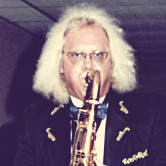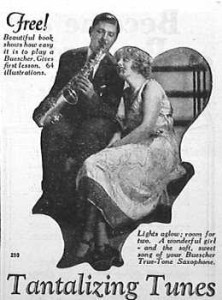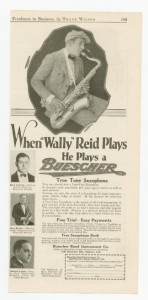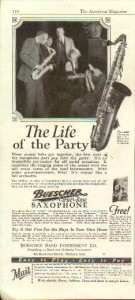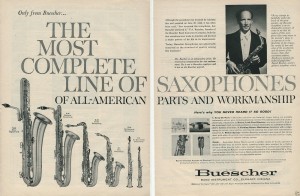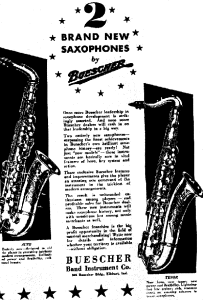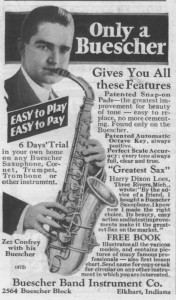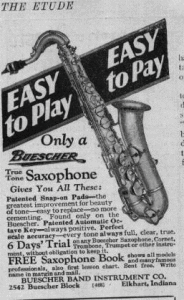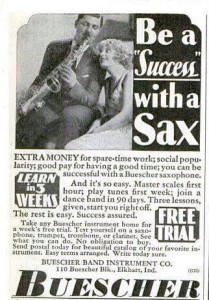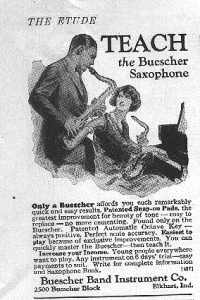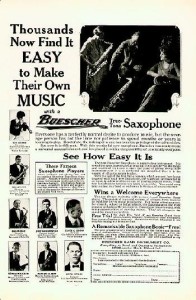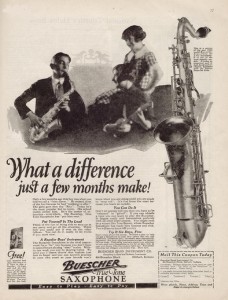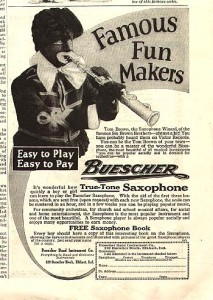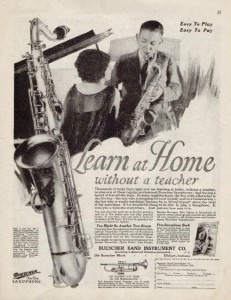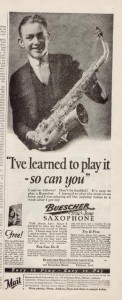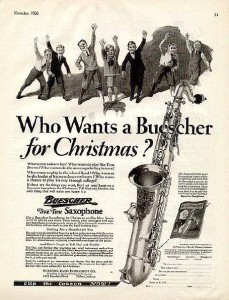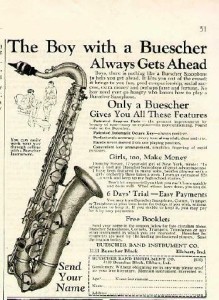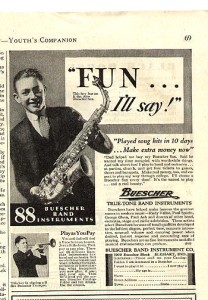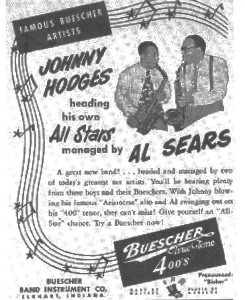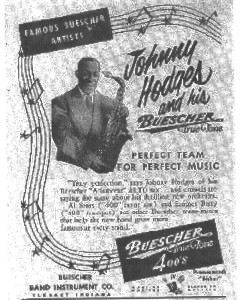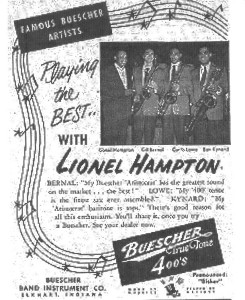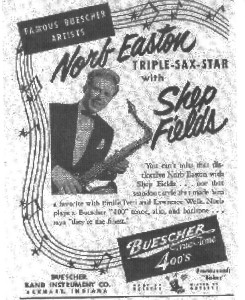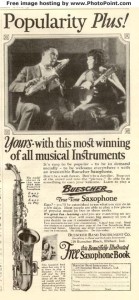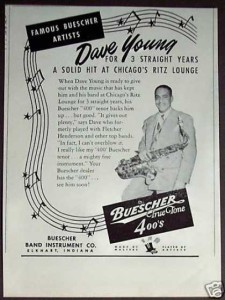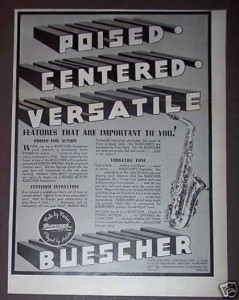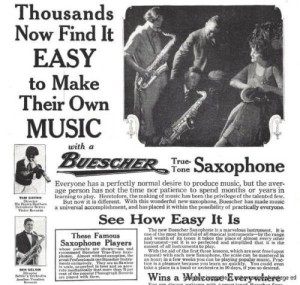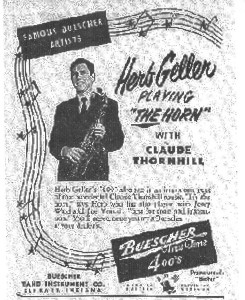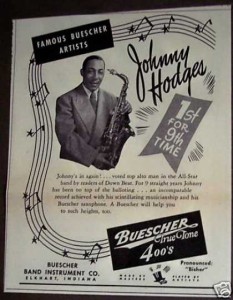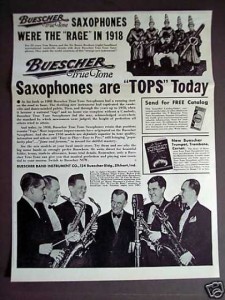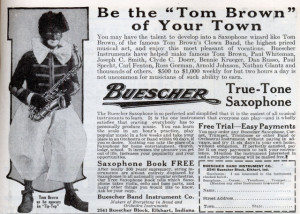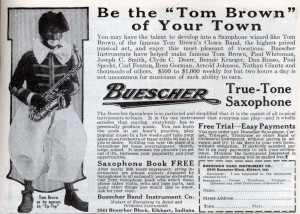-
General History
The company was founded by Ferdinand August “Gus” Buescher (born Elk Township, Noble County, Ohio 26 April 1861; died Elkhart, Indiana 29 November 1937). He accompanied his family to Goshen, Indiana and then to Elkhart in 1875. In 1876 he found employment with C.G. Conn’s fledgling band instrument factory, and in 1888 he was promoted to foreman. In 1890 while still employed with Conn, he began producing band emblems at home and was setting up his own shop. In the fall of 1894 he opened the Buescher Manufacturing Company at 1119 N. Main Street which made band instruments and other metal products, in partnership with John L. Collins, a clothing merchant, and Harry L. Young, a salesman. In March 1901 he patented a cornet unusual in that the valves were of unequal lengths.
In 1903 there was a disastrous bank crash which affected Buescher’s factory and a number of other local businesses. In 1904 the business was reorganized and renamed the Buescher Band Instrument Company. After the reorganization, the company limited itself to producing band instruments. In 1916 Buescher sold a major share of his company to six businessmen including Andrew Hubble Beardsley. Buescher remained president until 1919 when Beardsley assumed that title. Buescher was vice-president and general manager of the company until 21 January 1929 when he resigned these positions, remaining on staff as a consultant engineer.
In 1926 Buescher Band Instrument Company was joined with the Elkhart Band Instrument Company (some claim that Buescher was bought by Elkhart Band Instrument), a company founded two years previously by Beardsley with Conn’s Carl Greenleaf as secretary-treasurer. In 1963 Buescher was sold to H. & A. Selmer Company, (now Conn-Selmer). After the sale Selmer restricted the use of the Buescher trademark to selected products, and rebranded some instruments with other names. The quality level of the Buescher horns gradually decreased after the buyout as Selmer USA began to concentrate on the student horn market.
-
True - Tone
The very first True Tone models, up through about serial number 5000, had dual octave keys, metal key touches with no rollers, a metal button style G#. Around 5000, they acquired a pearl button G# key and black rollers, as well as pearl key touches on the main stacks. By serial number 78,000, Buescher saxophones had acquired the unique Snap In pad system. Front F keys appear around 157,000, and by 200,000 the left hand pinky table had been revised to a four roller system. The last significant change in the True Tone Series was the adoption of brown rollers around serial number 270,000.
-
New Aristocrat
The New Aristocrat series was a limited production transitional model produced between serial numbers 262,000 and 270,000. Other than the bell engraving, it is visually quite similar to the True Tone model which preceded it. This model is in great demand among classical players as it was the preference of Sigurd Rascher, who used a gold plated New Aristocrat with a 03 neck.
-
Aristocrat
The Aristocrat was a real step forward for Buescher. The low B and Bb were both mounted on the left side of the bell. The screw in Norton springs were introduced, and in combination with the Snap In pads, yielded a very easy to maintain saxophone.
-
400
Buescher
